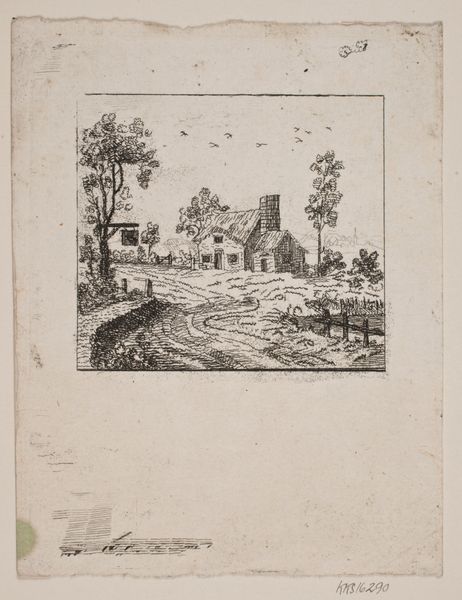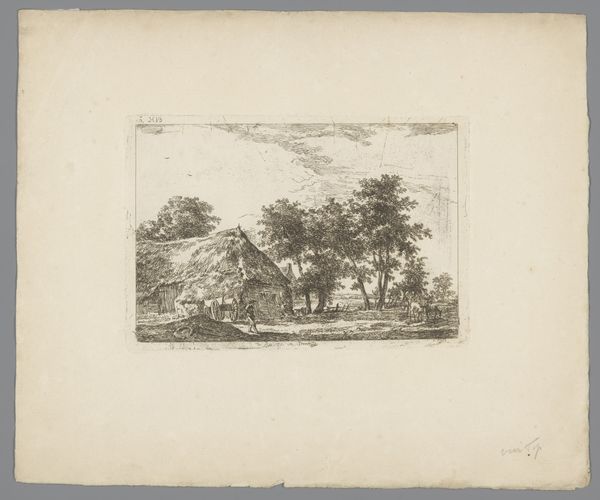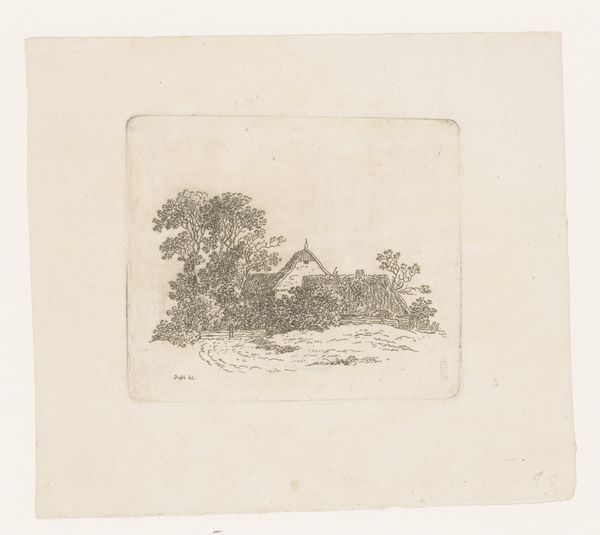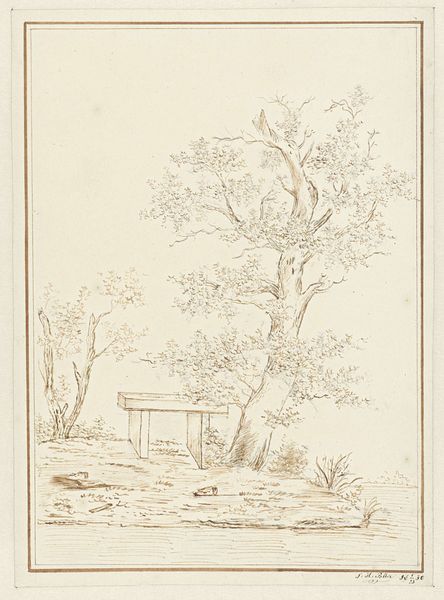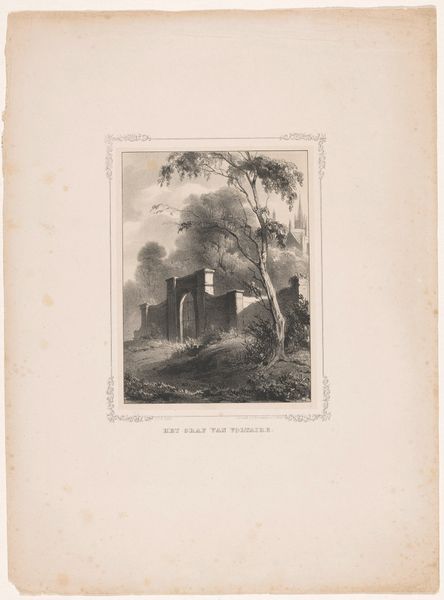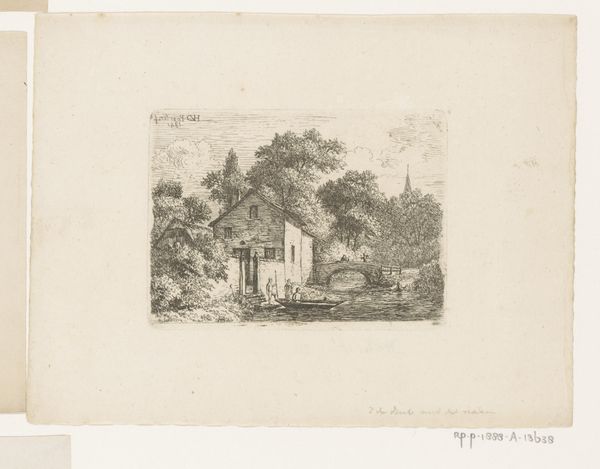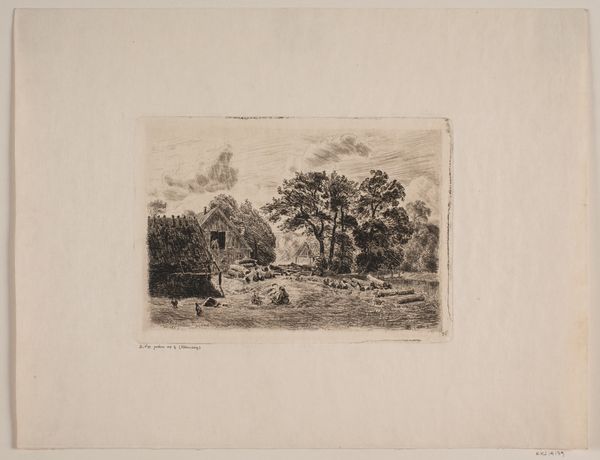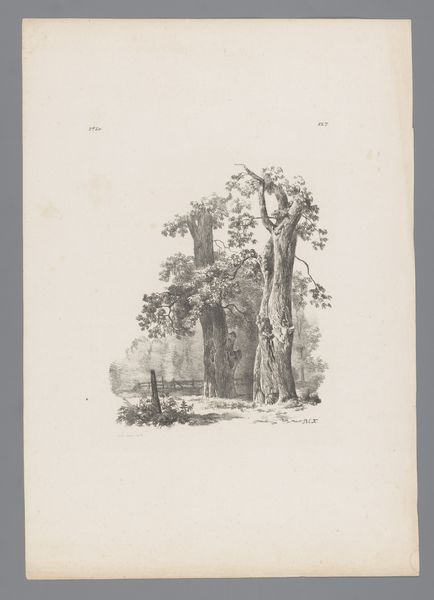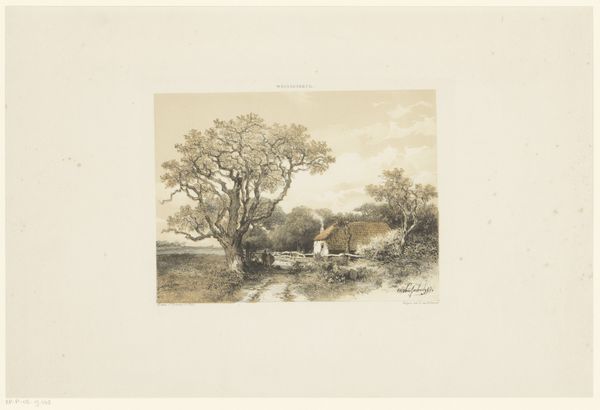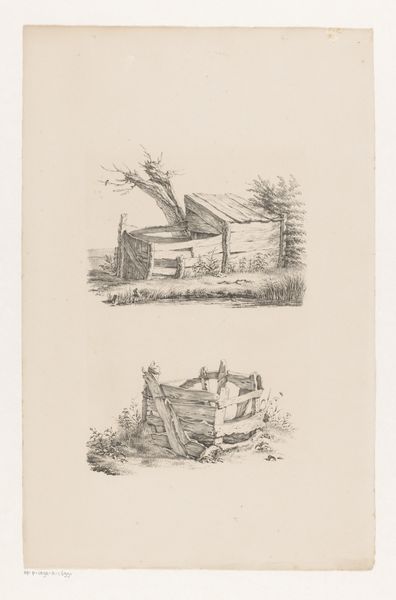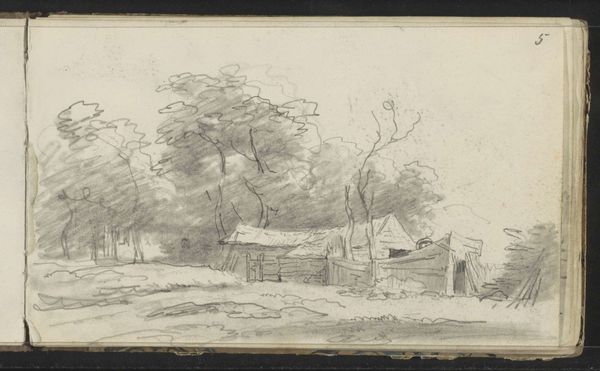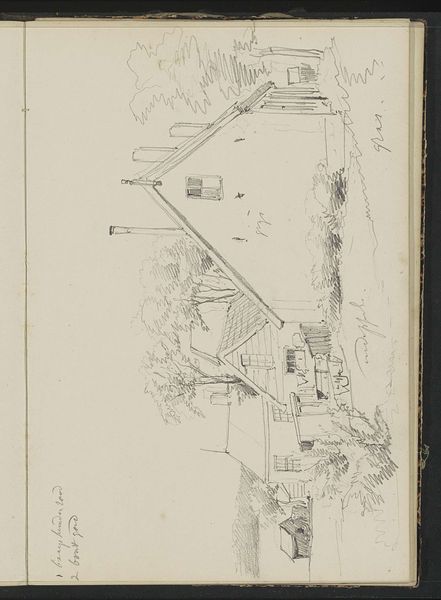
lithograph, print
#
lithograph
# print
#
landscape
#
romanticism
#
realism
Dimensions: 259 mm (height) x 173 mm (width) (bladmaal)
Adolph Kittendorff created this print, Kilden, using etching, a process that couldn't be more different than painting. Instead of building up an image, etching relies on carefully removing material from a metal plate. The plate is coated with a waxy, acid-resistant substance, and the artist then draws through this coating, exposing the metal beneath. When the plate is dipped in acid, the exposed lines are eaten away, creating grooves that will hold ink. The plate is then inked, wiped clean, and pressed onto paper, transferring the image. The result is a precise, linear image, quite different from the fluid marks of a brush. The stark black lines against the white paper give the image a graphic quality, emphasizing form and texture. It’s a labor-intensive process, demanding careful planning and skillful execution. Yet, the resulting prints could be reproduced in multiples, democratizing the image. In a time before photography, etching served as a vital means of circulating visual information.
Comments
No comments
Be the first to comment and join the conversation on the ultimate creative platform.
